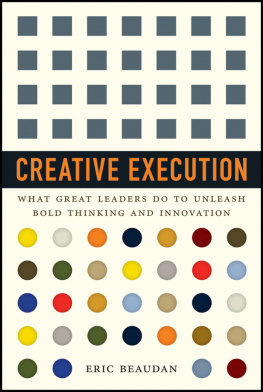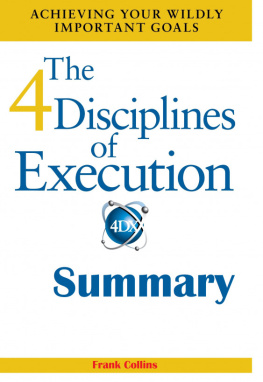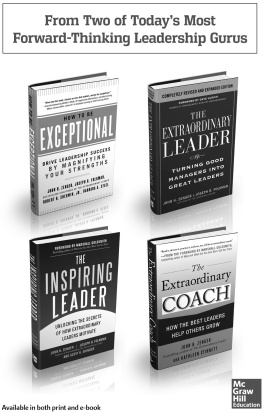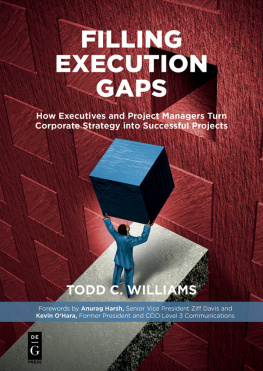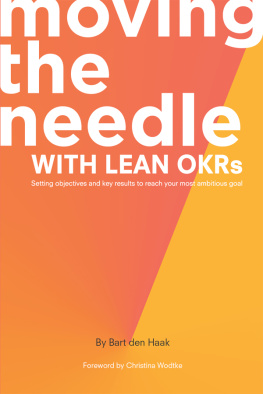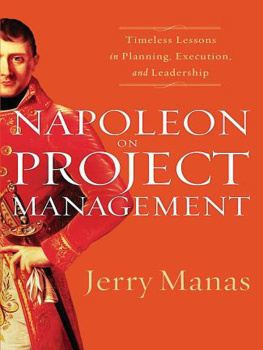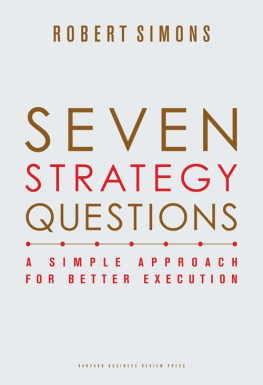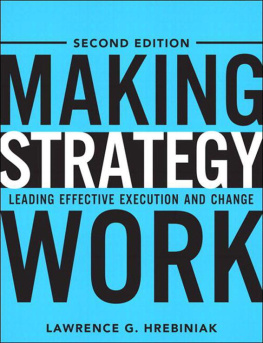Copyright 2012 by Eric Beaudan
All rights reserved. No part of this work covered by the copyright herein may be reproduced or used in any form or by any meansgraphic, electronic or mechanicalwithout the prior written permission of the publisher. Any request for photocopying, recording, taping or information storage and retrieval systems of any part of this book shall be directed in writing to The Canadian Copyright Licensing Agency (Access Copyright). For an Access Copyright license, visit www.accesscopyright.ca or call toll free 1-800-893-5777.
Care has been taken to trace ownership of copyright material contained in this book. The publisher will gladly receive any information that will enable them to rectify any reference or credit line in subsequent editions.
The material in this publication is provided for information purposes only. Laws, regulations, and procedures are constantly changing, and the examples given are intended to be general guidelines only. This book is sold with the understanding that neither the author nor the publisher is engaged in rendering professional advice. It is strongly recommended that legal, accounting, tax, financial, insurance, and other advice or assistance be obtained before acting on any information contained in this book. If such advice or other assistance is required, the personal services of a competent professional should be sought.
Library and Archives Canada Cataloguing in Publication Data
Phillips-Beaudan, Eric
Creative execution : what great leaders do to unleash bold thinking and innovation/Eric Beaudan.
Includes index.
Issued also in electronic formats.
ISBN 978-1-118-35109-3
1. Creative ability in businessManagement. 2. Organizational change Management. 3. Leadership. 4. Creative ability in businessManagementCase studies. 5. Organizational changeManagementCase studies. 6. LeadershipCase studies. I. Title.
HD53.P55 2012 658.4063 C2012-901354-4
ISBN 978-1-11835650-0 (ebk); 978-1-11835651-7 (ebk); 978-1-11835652-4 (ebk)
Production Credits
Cover design: Adrian So
Maps: Crowle Art Group
Cover printer: Friesens
Printer: Friesens
John Wiley & Sons Canada, Ltd.
6045 Freemont Blvd.
Mississauga, Ontario
L5R 4J3
www.wiley.com
For Troy and Ashley
Foreword
Every organization knows that its futureits success or failuredepends above all on its leaders. So it is not surprising that millions of words are written about leadership. But despite these words and the research behind them, leadership remains an elusive concept. There is no template for leadership. Even if we can list the worlds most famous leaders, recognising leadership potential is an art, not a science. In different circumstances, in different cultures and at different times, leadership qualities will be adapted in different ways.
One of the reasons why it is so difficult to define leadershipor to isolate the qualities that make for a good leaderis that leaders are like artists: they come in a bewildering array of shapes and sizes. Artists may be musicians, painters, or architectsthey might dance or sing or write. Leaders may be consistent or mercurial, charismatic or low-key, kind or harsh. And leadership is practiced in such a bewildering range of organizations from businesses and governments to charities and sports teams.
With so many variations and contradictions, it is easy to resort to defining leadership in a circular way. We can say that a leader is someone who can take people with him or her, who can inspire action, who can get results. But saying this simply begs the question: Which qualities does a leader really need to achieve those things?
Eric Beaudans insight is to identify just five core characteristics and to illustrate them not by developing a theory or list of competencies but with examples of leaders in war and business. With the difficulty of defining leadership, these examples are more helpful than abstract definition. Erics stimulating account of very different military, business, and political leaders brings to life the importance of the five characteristics that he proposes as the qualities for effective leadership in the twenty-first century.
The leaders in this book are willingeven eagerto break rules. Battles are not won by generals who fight by the book and success in business or war usually depends on identifying new strategies. That, in its turn, requires the leader to persuade people to do unfamiliar things and gain the trust of large numbers of people. Warfare demands a mix of thought leadership and action leadership. Great leaders, whether they lead armies into battle or turn around a struggling business, develop novel strategies and then turn strategy into action.
That we live in a rapidly changing world is a clich because there is no period in modern history when the world has not been changing in a way that seemed bewildering at the time. The great leaders of the twentieth century lived in turbulent times and succeeded mightily because they developed new ways of doing business and turned their ideas into reality. Now as the East comes to dominate our thinking, and as economic dominance seems to be slipping from the West, it is as true as ever that the winners in business will be those who develop bold strategies and are willing to be visible leaders who take judicious risks and defy the odds.
Although warespecially wars as long ago as those of Alexander the Greatseems far removed from business, the leaders in this book help to demonstrate the essence of the qualities that Eric identifies as core to any leaders success. A leader in businessas in warmust develop a unique strategy, communicate it, determine who should do what, implement boldly, and be visible to those whom he or she has to take on this dangerous journey. The stories from Four Seasons, Toyota, and Google aptly mirror these requirements.
At Odgers Berndtson, our partners and consultants around the world have a special responsibility: to find and recognize leadership potential and matching them to organizations with different styles and challenges. We constantly advise boards, CEOs, and leaders of some of the worlds most fascinating private and public organizations on how to find and assess people to lead them into new directions. From our vantage point, I can tell you that leadership isnt a lofty topic that only briefly emerges on organizations agendas. It is by far the single most important subject that consumes boards, executive teams, and decision makers as they respond to the massive economic and political shifts that have erupted around us.
Just as organizations know that their future depends on how well they select their leaders, so ambitious individuals know that they must develop leadership skills. They know that to rise to the top of their organizations, and to be successful when they get there, they must constantly challenge their own thinking and develop their leadership.
And so whether youre the newly appointed CEO of a company wondering how to chart a course for the future, or steering a public-sector agency in an era of austerity and high anxiety, this book will help you set in motion the critical leadership decisions that will make you successful. There is a Creative Execution leader inside all of us, and there is an unbounded supply of opportunities and challenges around the world that require all of us to apply these leadership qualities.
Richard Boggis-Rolfe
Chairman, Odgers Berndtson
London, United Kingdom
February 2012
Acknowledgements
Many friends, mentors, colleagues and clients have inspired the writing of this book. For simplicitys sake, I will acknowledge them in chronological orderto parallel the writing of Creative Execution.

